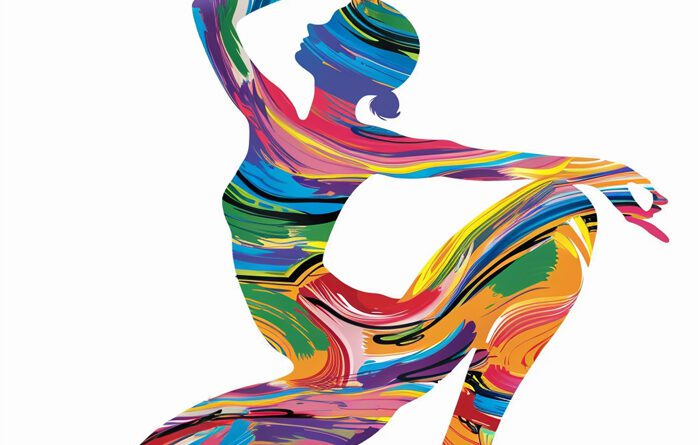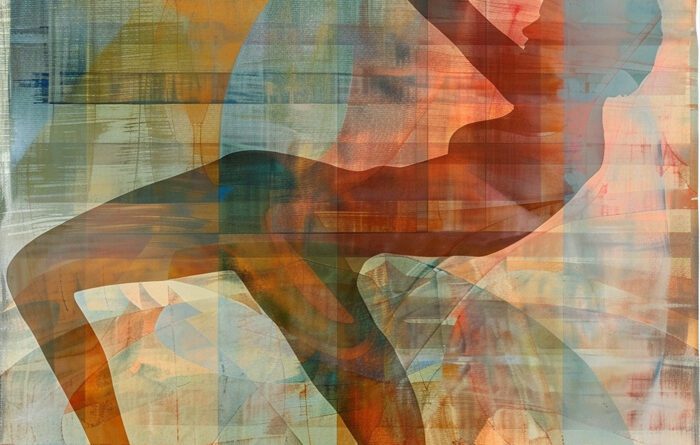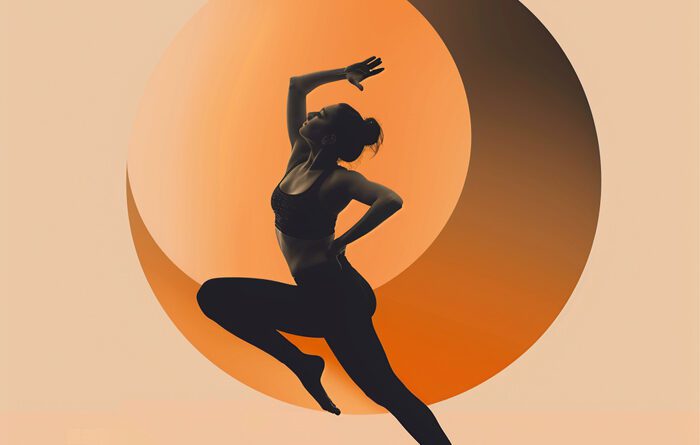Unleash the Power of Cobra Pose and experience the transformative effects it can have on your mind and body. As a yoga instructor who specializes in working with beginners, I understand the importance of finding simple yet effective poses to introduce into your practice. Let me guide you through this powerful asana that not only strengthens your back and core muscles but also boosts your energy levels and elevates your mood. Whether you’re seeking to improve flexibility, relieve stress, or enhance your overall well-being, the Cobra Pose, also known as Bhujangasana, is the perfect addition to your yoga routine. So let’s explore the benefits and proper technique of this pose, allowing you to tap into your inner strength and embrace the transformation that awaits you.
Benefits of Cobra Pose
Cobra Pose, also known as Bhujangasana, offers numerous benefits for both the body and mind. Let’s explore some of the amazing advantages of practicing this pose.
Strengthening the back and core muscles
When you perform Cobra Pose, you engage and strengthen the muscles in your back and core. By lifting your chest off the mat using the back muscles, you build strength in the spinal extensors and the muscles that support the spine. These muscles are essential for maintaining a healthy and strong back.
Increasing flexibility in the spine
Cobra Pose is an excellent way to enhance flexibility in your spine. As you lift your chest off the mat, you gently stretch and extend the spine, loosening any tension or tightness. Regular practice of this pose can gradually increase your spine’s flexibility, promoting better mobility and preventing stiffness.
Improving posture
Cobra Pose can help improve your posture by strengthening the muscles that support proper alignment. By engaging the back muscles and opening the chest, you encourage a natural and healthy posture. Regular practice of Cobra Pose can train your body to maintain good alignment even outside of your yoga practice.
Enhancing digestion
One of the lesser-known benefits of Cobra Pose is its positive effect on digestion. This pose stimulates the abdominal organs, including the digestive system. The gentle compression and movement created in the abdomen can promote digestion and alleviate digestive issues, such as bloating and constipation.
Relieving stress and anxiety
Cobra Pose is a fantastic posture for relieving stress and anxiety. As you lift your chest and open your heart, you create a sense of spaciousness and release in the upper body. This stretch can help release any stored tension and emotions, leaving you feeling more relaxed and at ease.
Stimulating abdominal organs
Regular practice of Cobra Pose can stimulate and tone the abdominal organs. The gentle compression of the abdomen in this pose can improve the functioning of organs such as the liver, kidneys, and pancreas. This can have a positive impact on your overall health and well-being.
Opening the chest and improving lung capacity
Cobra Pose is an excellent pose for opening the chest and improving lung capacity. As you lift your chest off the mat and expand through the upper body, you create space for your lungs to fully expand and take in more oxygen. This can enhance your breathing and increase the efficiency of your respiratory system.
Proper Alignment in Cobra Pose
To benefit fully from Cobra Pose and prevent any strain or injury, it’s essential to practice proper alignment. Here’s a step-by-step guide to achieving the correct alignment in Cobra Pose:
- Starting in a prone position, lie face down on your mat with your legs extended behind you.
- Place your palms on the ground under your shoulders, with your fingers spread wide for stability.
- Bend your elbows and hug them close to your body.
- Keep your feet together, and press the tops of your feet into the mat.
- Engage your core muscles by drawing your belly button towards your spine.
- Using your back muscles, lift your chest off the mat while keeping your hips rooted to the ground.
- Make sure to keep your shoulders relaxed and away from your ears, avoiding any tension in the upper body.
By following these alignment cues, you can ensure a safe and effective practice of Cobra Pose.
Modifications for Beginners
If you are new to Cobra Pose or have any limitations, here are some modifications you can incorporate into your practice:
Using props such as blocks or blankets under the hands
If you find it challenging to reach the ground with your palms, you can place blocks or folded blankets under your hands. This modification allows you to lift your chest while providing support and reducing strain on the wrists.
Bending the arms slightly to reduce strain
If you feel any discomfort or strain in your lower back or shoulders, you can modify Cobra Pose by bending your arms slightly. This modification can help alleviate any unnecessary pressure and allow you to focus more on engaging your back muscles.
Lowering the chest halfway if full extension is uncomfortable
If lifting your chest fully off the mat feels uncomfortable or causes strain, you can modify the pose by lowering your chest halfway. This modification still provides the benefits of Cobra Pose while allowing you to work gradually towards the full expression of the pose.
Using a strap around the upper arms to help maintain proper alignment
If you have difficulty keeping your elbows hugged close to your body, you can use a yoga strap around your upper arms. This strap can serve as a reminder to maintain proper alignment and engagement of your back muscles.
Remember, modifications are there to support your practice and make it accessible for your unique needs. Listen to your body and honor any limitations you may have.
Precautions and Contraindications
While Cobra Pose offers numerous benefits, there are some precautions and contraindications to keep in mind. Here are a few situations where it is advisable to avoid or modify Cobra Pose:
Avoiding Cobra Pose if you have a herniated disc or back injury
If you have a herniated disc or any other back injury, it is best to avoid Cobra Pose. This pose involves significant extension of the spine, which can put pressure on the affected area and worsen the injury. Instead, seek guidance from a yoga instructor or healthcare provider for alternative poses that can support your healing process.
Avoiding this pose during pregnancy
Pregnant individuals should avoid or modify Cobra Pose, especially as the pregnancy progresses. The pose involves lying on the stomach, which can become uncomfortable or unsafe as the belly grows. It is always recommended to consult with your healthcare provider and seek prenatal-specific yoga guidance for a safe practice during pregnancy.
Modifying the pose if you have wrist or shoulder issues
If you have any wrist or shoulder issues, Cobra Pose may put excessive strain on these areas. To prevent exacerbating the discomfort, modify the pose by using props or performing alternative backbend poses that are more suitable for your specific needs. It’s important to prioritize your safety and comfort during your yoga practice.
Consulting with a yoga instructor or healthcare provider if you have any concerns
If you have any concerns or pre-existing conditions that may affect your practice of Cobra Pose, it is always advisable to consult with a qualified yoga instructor or healthcare provider. They can provide personalized guidance and help you navigate any complexities or potential contraindications.
Remember, your safety and well-being are of the utmost importance during your yoga practice. Listen to your body, respect your limits, and seek professional guidance when needed.
Breathing Techniques in Cobra Pose
Breathing plays a vital role in maximizing the benefits of Cobra Pose. The following breathing techniques can enhance your practice and promote relaxation:
Inhaling deeply as you lift the chest off the mat
As you lift your chest off the mat, take a deep inhalation through your nose. Focus on expanding your chest and allowing the breath to flow freely into your lungs. This deep inhale can energize your body and prepare you for the pose.
Exhaling slowly as you lower back down
As you lower your chest back down to the mat, release your breath slowly through your nose or mouth. Pay attention to the sensation of your chest descending and feel the breath leaving your body. This controlled exhale promotes relaxation and helps you find a sense of calmness.
Practicing deep belly breathing to enhance relaxation
In addition to the breath coordination mentioned above, you can incorporate deep belly breathing into your Cobra Pose practice. Take deep breaths in and out through your nose, allowing your belly to expand as you inhale and contract as you exhale. This conscious breathing can help further calm the mind and deepen your relaxation.
By syncing your breath with the movements of the pose, you can cultivate a deeper mind-body connection and optimize the benefits of Cobra Pose.
Sequencing Cobra Pose in a Yoga Practice
Cobra Pose can be integrated into various sequences in your yoga practice. Here’s how you can include it to maximize its effects:
Including Cobra Pose in a warm-up sequence to prepare the back
Cobra Pose is an excellent choice for a warm-up sequence, especially if you plan to focus on backbends. Start with gentle movements and stretches to warm up the entire body, then gradually introduce Cobra Pose to awaken and prepare the back muscles.
Sequencing Cobra Pose after poses that stretch the chest and shoulders
To create a well-rounded sequence, you can incorporate chest and shoulder-opening poses before Cobra Pose. Poses such as Sphinx, Bridge, or Cow Face Arms can help loosen and prepare these areas, allowing for a smoother transition into Cobra Pose.
Incorporating Cobra Pose as part of a larger backbend sequence
If you want to explore more backbends, Cobra Pose can be seamlessly integrated into a larger sequence. Poses like Upward-Facing Dog, Camel Pose, or Wheel Pose can be practiced in conjunction with Cobra Pose to deepen your backbend practice.
By strategically sequencing Cobra Pose with other complementary poses, you can create a coherent and well-rounded yoga practice that maximizes the benefits of each pose.
Modifications for Different Levels
Whether you’re a beginner or an experienced practitioner, here are some modifications you can explore to cater to your current level:
Using blocks under the hands to reduce strain
Placing blocks under your hands can provide extra support and reduce strain on the wrists. This modification is beneficial for beginners who may struggle with wrist flexibility or strength. By gradually lowering the height of the blocks, you can work towards the full expression of Cobra Pose.
Lowering the chest halfway if full extension is challenging
If lifting your chest fully off the mat feels challenging or uncomfortable, it’s perfectly okay to lower your chest halfway. This modification allows you to engage the back muscles and experience the benefits of Cobra Pose while respecting your current level of flexibility.
Working towards advanced variations of Cobra Pose, such as King Cobra
Once you have developed strength and flexibility in Cobra Pose, you can explore more advanced variations like King Cobra. This variation involves lifting the chest even higher, with the elbows fully extended. It’s important to approach advanced variations mindfully and with proper preparation to avoid strain or injury.
Remember, your yoga practice is unique to you, and it’s essential to honor your body’s capabilities and limitations. Listen to your body’s signals, and progress at a pace that feels comfortable and safe for you.
Common Mistakes and How to Correct Them
As with any yoga pose, there are common mistakes that can compromise the effectiveness and safety of Cobra Pose. Here are a few mistakes to avoid and tips to correct them:
Lifting the shoulders up towards the ears
One common mistake is lifting the shoulders and tensing the muscles around the neck. To correct this, consciously relax your shoulders away from your ears. Focus on engaging your back muscles to lift your chest, rather than relying on the strength of your arms or shoulders.
Using the arms too much and not engaging the back
Another mistake is relying solely on the arms to lift the chest, neglecting the engagement of the back muscles. To address this, shift your focus to using your back muscles to initiate and sustain the lift. Imagine your chest being pulled forward and up by the strength and engagement of your back.
Lowering the head too much and straining the neck
Some people tend to drop their heads excessively, straining the neck and compressing the cervical spine. To avoid this, keep a neutral alignment in your neck by gazing slightly forward or down. Maintain a natural extension in the cervical spine without collapsing or hyperextending it.
Sinking the hips and losing core engagement
Allowing the hips to sink and losing engagement in the core is another common mistake. To maintain proper alignment, engage your core muscles and draw your belly button towards your spine. This engagement keeps your hips lifted and promotes stability throughout the pose.
Not breathing deeply and rhythmically
Forgetting to breathe deeply and rhythmically is a mistake that can hinder the benefits of Cobra Pose. Remember to consciously inhale deeply as you lift your chest and exhale slowly as you lower back down. Cultivate a steady and flowing breath throughout the pose to enhance relaxation and maintain focus.
By being mindful of these common mistakes and making the necessary adjustments, you can ensure a safe and effective practice of Cobra Pose.
Building Strength and Flexibility for Cobra Pose
To enhance your performance in Cobra Pose, it’s beneficial to work on building strength and flexibility in specific areas of your body. Here are some exercises and practices that can support your journey:
Incorporating back strengthening exercises into your regular fitness routine
In addition to your yoga practice, incorporating targeted back strengthening exercises can help you build the necessary strength for Cobra Pose. Exercises like Superman, Bird Dog, and Bridge pose can target the muscles in your back and further support your Cobra Pose practice.
Practicing gentle backbends to gradually increase flexibility
To increase your flexibility for Cobra Pose, incorporating gentle backbend poses can be beneficial. Poses like Sphinx, Seal, and Baby Cobra can gently stretch and open your spine, allowing you to gradually deepen your range of motion over time.
Working on opening the shoulders and chest
Opening the shoulders and chest is essential for achieving proper alignment in Cobra Pose. Incorporate shoulder stretches and chest openers, such as Cow Face Arms, Reverse Prayer Pose, and Sphinx with shoulder rolls, to release tension and increase mobility in these areas.
By incorporating these practices into your routine, you can build the strength and flexibility needed to advance your Cobra Pose practice safely and effectively.
Taking Your Practice Beyond Cobra Pose
While Cobra Pose offers numerous benefits, it’s important to explore beyond this pose and continue to expand your yoga practice. Here are some ways to take your practice to the next level:
Exploring other backbend poses, such as Upward-Facing Dog and Camel Pose
Once you feel comfortable and confident in Cobra Pose, you can explore other backbend poses that offer unique benefits. Upward-Facing Dog and Camel Pose are excellent options to deepen your backbend practice and further strengthen your back muscles.
Incorporating Cobra Pose into a full yoga practice
Cobra Pose can be seamlessly integrated into a full yoga practice, serving as a foundational pose for a well-rounded sequence. By incorporating Cobra Pose into a sequence that includes other standing poses, forward folds, and twists, you can benefit from a comprehensive and balanced practice.
Continuing to learn and grow in the practice of yoga
Yoga is an ever-changing and ever-evolving practice, with endless possibilities for growth and exploration. As you delve deeper into your practice, continue to learn and explore new poses, styles, and techniques. Seek guidance from experienced teachers, attend workshops, and embrace the transformative journey that yoga offers.
Remember, Cobra Pose is just one piece of the puzzle. By continually expanding your knowledge and practice, you can unlock the secrets of a well-rounded and fulfilling yoga journey.
In conclusion, Cobra Pose is a powerful and beneficial posture that offers numerous physical and mental advantages. By practicing proper alignment, exploring modifications, and building strength and flexibility, you can experience the full potential of Cobra Pose. Remember to listen to your body, seek guidance when needed, and continue to explore and grow in your yoga practice. Embrace the power of Cobra Pose and let it propel you towards a stronger, more flexible, and balanced self.







